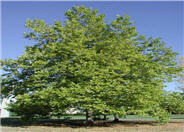
Common name:London Plane Tree
Botanical name:Platanus X acerifolia
London Plane Tree is a fast growing, deciduous tree that reaches a size 40'-80' high by 30'-40' wide. Its leaves are 3-5 lobed, with a width of 4"-10". This plant is tolerant of most soils, smog, dust and reflected heat.
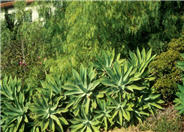
Common name:Fox Tail Agave, Velvet Agave
Botanical name:Agave attenuata
This Agave has a dramatic tropical form. Even light frost can damage its succulent leaves. It is great for containers. In the low desert, partial sun will be best. If it becomes top heavy, simply cut and stick in the ground to root. It is not a fast grower and has light green foliage. It will also die after flowering but pups around the mother will survive. Distinctive with its large rosette of leaves perched on a long curving trunk, it is a native from Mexico.
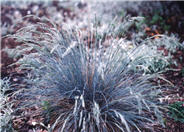
Common name:Rainbow Fescue
Botanical name:Festuca amethystima 'Superba'
The Rainbow Fescue is a hardy fescue with fine, blue green foliage that grows 8" tall. It has spring flowers that are 12" above the foliage. This fescue is a very showy, neat grass for sunny spots during spring and fall. The Rainbow Fescue is drought tolerant.
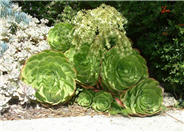
Common name:Parasol Aeonium
Botanical name:Aeonium arboreum
Parasol Aeonium is an upright succulent with rosette leaf clusters. It forms a mound and can be easily propagated by cuttings.
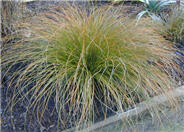
Common name:Orange Sedge
Botanical name:Carex testacea
Brown Sedge is an evergreen perennial that reaches 2' tall bearing very narrow, coppery brown leaves splitting to hair-like threads at their tips, and continuing to grow to 4'-8' in length. This plant should be grown in sun with little or no summer watering.
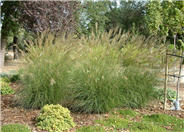
Common name:Adagio Eulalia Grass
Botanical name:Miscanthus sinensis 'Adagio'
These deciduous grasses grow from 2'-3' tall, and often turn orange or dark red before going dormant. Tall, showy spikes of feathery, curved seed heads are borne and retained well into the winter or the following spring. It should receive sun to part shade, and average to little summer watering. -Monterey Bay Nursery
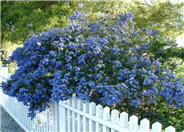
Common name:Concha California Lilac
Botanical name:Ceanothus 'Concha'
Concha is a lilac that grows 6'-8' in height and width. It has small narrow leaves with intense dark blue flower clusters in spring. It is tolerant of coastal and inland conditions.
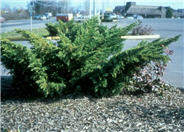
Common name:Pfitzer Juniper
Botanical name:Juniperus X pfitzeriana
Juniperus chinensis 'Pfitzeriana' grows 5'-6' high and 10'-12' wide. This shrub has arching, feathery, gray green foliage. Junipers are highly combustible plants.
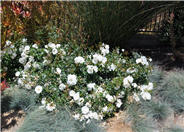
Common name:Ground Cover Rose selections
Botanical name:Rosa Ground Cover varieties
There are many deciduous, evergreen and semi-deciduous roses that are used as groundcovers, usually reaching 2' in height. They look lovely draping a slope. Rosa groundcovers come in a variety of colors but all need full sun and a moderate amount of water to do well.
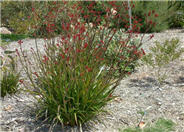
Common name:Kangaroo Paws, Red
Botanical name:Anigozanthos hybrids
This tender perennial is a clump-forming evergreen that produces fuzzy, yellow green flowers that bloom in spring and last for over 2 months. Many sizes and varieties are available including yellow and pink flowers.
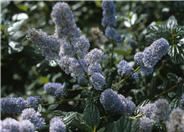
Common name:Carmel Creeper
Botanical name:Ceanothus griseus horizontalis
Carmel Creeper is one of the most popular forms of spreading shrubs. Its glossy oval leaves of 2" are bright green. The tiny, light blue flowers are abundant and form 1" clusters. This shrub benefits from pruning. It does best in well-drained soil with little to no summer water.
Dealing With Drought
More than half of the water used at your home is for outside purposes. Studies show that on average, half of the water used outdoors is wasted. The leading cause of waste is incorrectly set and poorly managed irrigation controllers. The second biggest cause of wastage is broken irrigation equipment that goes undetected. There are a few basic things you can do to make a big difference in your water use.
Click in the green box for more information
| Designer: Carmichael Environmental | Flow of Life |
Photographer: GardenSoft |
Soils and Compost:
Physical weed control, including mulching, or hand removal protects the watershed from harmful chemicals.
Integrated Pest Management:
Remove irrigation water and fertilizer from areas where you don't want weeds to grow.

